Ask Ethan # 66: Did we find dark matter?
In no case. Found us, albeit a mystery, but certainly not lost mass of our universe
Time absorbs everything into itself, time takes the past further, and finally only darkness remains. Dark.
- Stephen King
But we have not the end of time, but the end of the week. Time to answer the next question in the column “Ask Ethan,” where, choosing among very good questions, I chose a question from Joe Laton, who asks about the recent news:
I read many headlines in physical publications, such as "Researchers have discovered a possible signal from dark matter." Could you, with your characteristic expressiveness, explain the background of the issue and the essence of the news?
Let's give Joe what he needs!
')

First, there is the problem of dark matter. Studying the galactic cluster - for example, such as the Veronica Hair cluster in the photo above, we can apply two methods to measure its matter:
- Look at the entire spectrum of electromagnetic signals emanating from it, including not only the stars emitting light, but also the light emitted and absorbed in other parts of the spectrum. This will give us information about the amount of gas, dust, plasma, neutron stars, black holes, dwarfs and even planets inside.
- Trace the motion of objects in a cluster — in this case, individual galaxies — and use the knowledge of the laws of gravity to calculate their total mass.
Comparing the values obtained, we will see whether the whole mass of normal matter belongs, or whether there must be something else, made not from protons, neutrons and electrons.
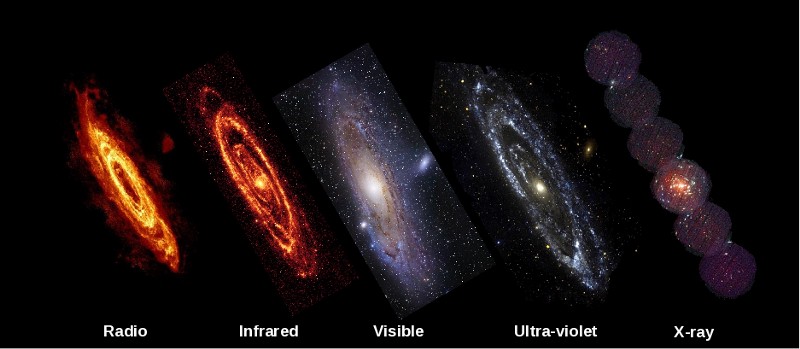
The same can be done for individual galaxies. Just look at all the different components of the galaxy at all wavelengths. For both galaxies and clusters, we find a certain mass in the form of stars, then about 5-8 times more mass in the form of a neutral gas, quite a bit in the form of plasma (although it is full in the intergalactic space), and a small fraction in the form of other types of masses combined. On average, in addition to the total mass of all stars, there is about eight times the mass of other components consisting of normal matter.
But, deriving the total mass from gravity, we discover something unexpected. To justify all the observed gravitational effects, such as the speeds of rotation of galaxies at different distances in separate spirals, and the speeds of individual galaxies relative to the cluster center, we need a mass not eight times the total mass of stars, but fifty!

Such a difference, as well as the fact that we need about five times more matter by weight than normal matter found in the Universe today, is called a dark matter problem. A huge number of observations - including measurements of distances and redshifts of standard astronomical candles, gigantic observations of large structures in the Universe, observations of collisions of galactic clusters, and accurate measurements of microwave cosmic background radiation (afterglow of the Big Bang) - show that the problem is not gravity theory , and in the existence of a new type of matter, which in the Universe is five times more than ordinary, atomic.
And this new form of matter - dark matter - among other things, does not interact with matter and radiation by means of electromagnetic forces.
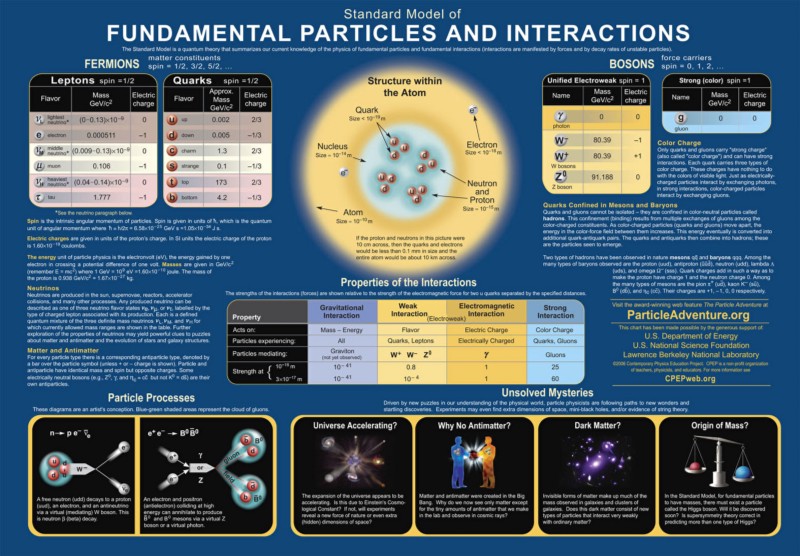
It is also established that whatever this dark matter may be, these are not ordinary particles from the Standard Model. These are not quarks, not bosons, not even neutrinos. Whatever it is, it must be a new type of particle that has not yet been discovered.
Based on the gravitational properties that such particles should have, they should be assembled into giant halos, both around galaxies and around clusters, in giant rarefied spheroids.

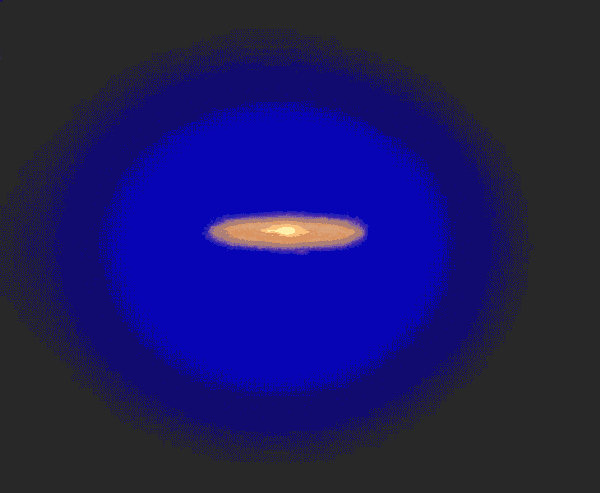
In most models of dark matter, it is assumed that its particles must be their own antiparticles. Therefore, where the density of dark matter is maximal (in the centers of galaxies and clusters), there is a possibility of their annihilation. And in this case, two annihilating particles will emit two photons, the energy of each of which (for energy and momentum conservation) will correspond to the rest mass of the particle.

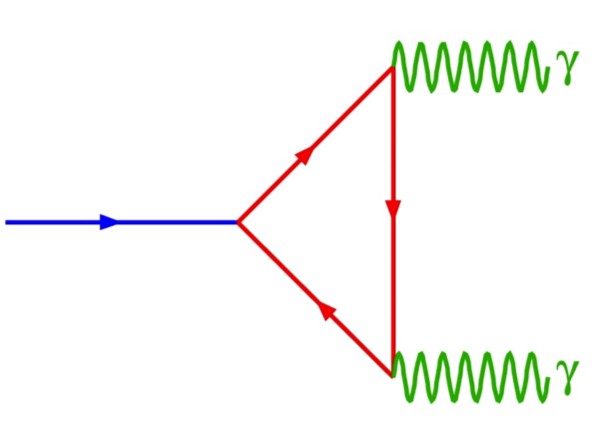
That sounds great, right? We just need to direct telescopes with high-energy detectors, our x-ray and gamma-ray observatories, to the centers of galaxies and clusters, and look for signals from this annihilation. This means looking for spectral lines of energy that do not correspond to known particles.
Nonsense, right?
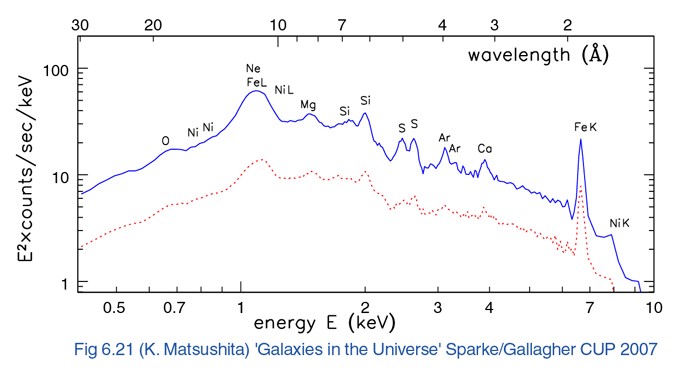
No, wait a minute. The problem is that in the Universe there are many different high-energy phenomena that we here on Earth do not understand yet! Why? Because we cannot recreate all those strange phenomena that occur in space, and we do not know what causes many (or even most) of the gamma-ray and x-ray emission backgrounds that we observe.
In other words, there are many sources of x-rays and gamma rays, known, but not known to us.
As Joe notes, this year a new X-ray line was discovered - a source of about 3.5 keV - in the core of the Andromeda galaxy and the core of the Perseus cluster.
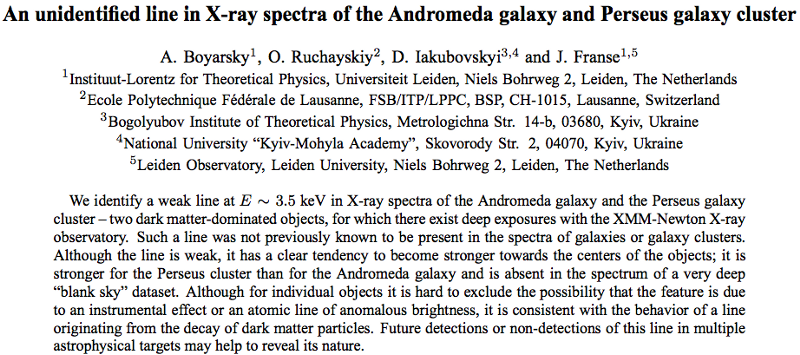
Is it caused by something ordinary, such as particles accelerating around a supermassive black hole?
Or is the reason for this a new particle - the same sterile neutrino, for example - responsible for dark matter, annihilating and as a result demonstrating its rest mass, equivalent to (through E = mc 2 ) 3.5 keV? (Or two times more, 7 keV, if it is a decaying particle).

In the news they want you to believe that the second option is possible - because it would be cool if it turned out to be dark matter? But this signal is not only not yet really confirmed (the detection value is 4σ even for the combined data set, when the standard for discoveries is 5σ), it still can not be responsible for the dark matter in the Universe!
Why? Take a look at the picture of the dense and rarefied regions of our Universe 380,000 years after the Big Bang: cosmic microwave background radiation.

It is easy to imagine that at that time the Universe was denser and younger, but it is easy to forget that it was also hotter. This means not only that the radiation was hot, but also that matter in it moved at much higher speeds. And this applies not only to normal matter, like atoms, but also to dark matter.
Why is it important? Because in order to stray into lumps, and maintain structure due to gravitational collapse, matter must move slowly enough, or collapse does not occur. And if dark matter is too light, the structure will not be formed early enough to converge with the observations!
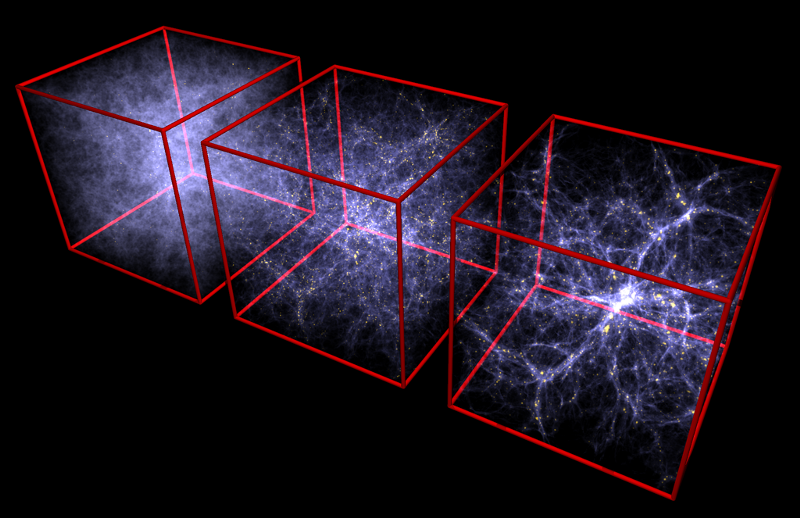
What can we use as a constraint? The best measurements come from a phenomenon called “Lyman forest alpha”, which serves as a measure of the age of gravitational wells of gas clouds, weakly gravitationally connected together. Of course, the densest objects will turn into stars, galaxies and quasars - but gas clouds will interfere in the process, and they will absorb some of the light at characteristic frequencies.
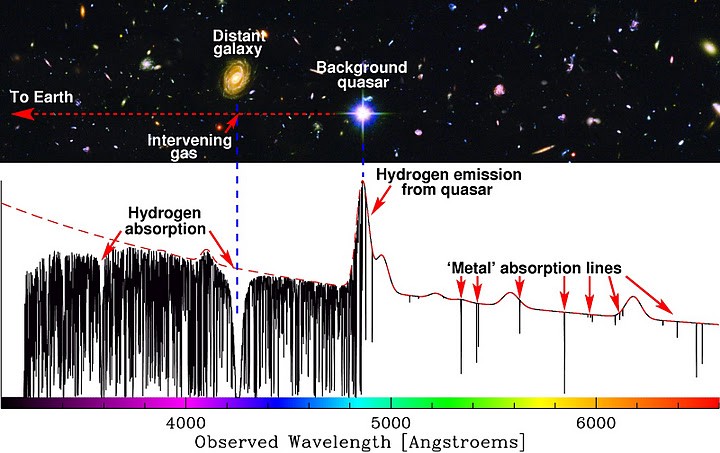
By studying the depth of the “forest lines”, especially at the beginning, we can impose restrictions on the weight of dark matter. And even in the most free of circumstances, you can see that the absorption lines are incredibly strong - they correspond to the fact that dark matter is very cold - and this means that its mass is limited from below.
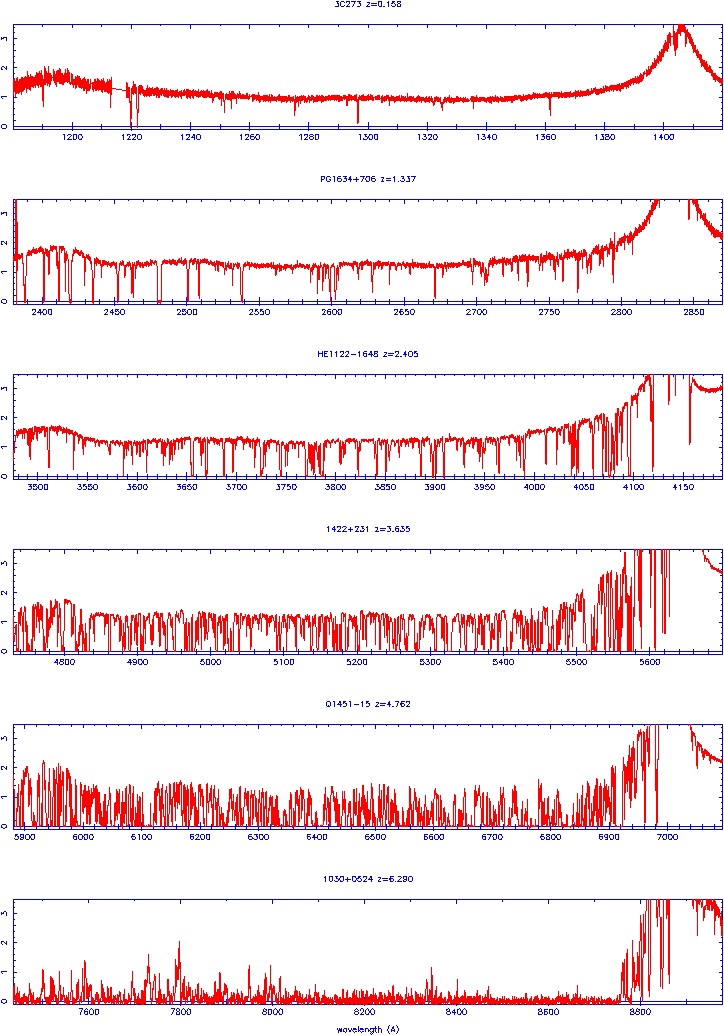
And what is the value? Now it should be heavier than 10 keV, judging by the strength of the observed absorption lines. In other words, 3 times harder (or 50% heavier in the case of a decaying particle) than this, supposedly, “dark matter signal”!
Do not misunderstand me, the discovery of a potentially new line of X-rays is very interesting, and can open up a new astrophysics, or, potentially (albeit unlikely), a new type of particles. But even if it turns out to be a new particle, it will not belong to dark matter, since this would violate the entire structure of the Universe (especially on a small scale), and our observations of these structures exclude such a scenario.
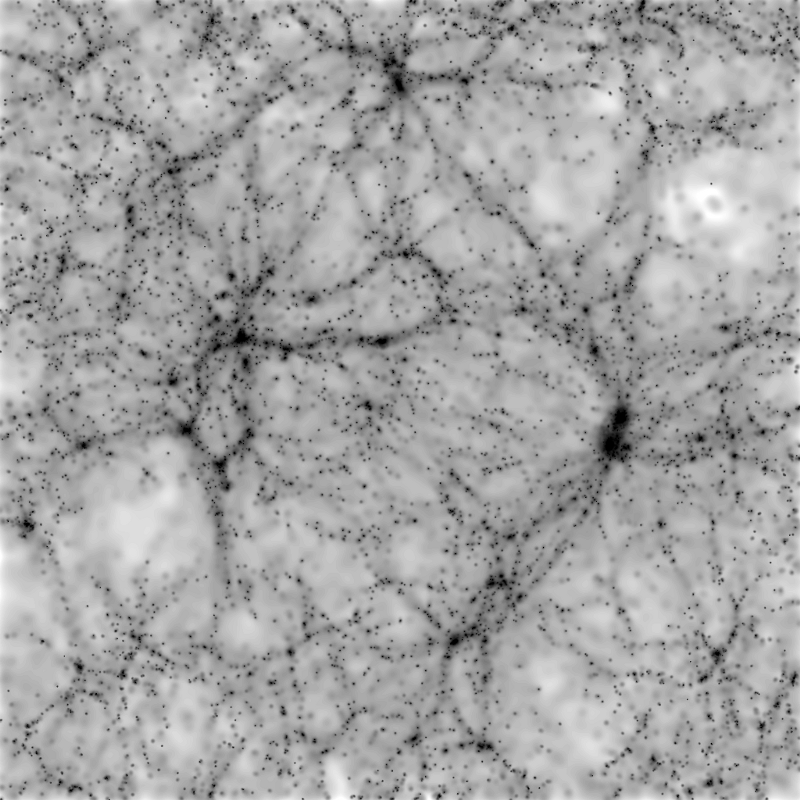
So - this is interesting, but dark matter can not be? No way, only if we have terribly messed up in many places.
Thank you for the wonderful question, and I hope that the explanation has been made clear for you and for the rest. Send me your questions and suggestions for the following articles.
Source: https://habr.com/ru/post/395571/
All Articles